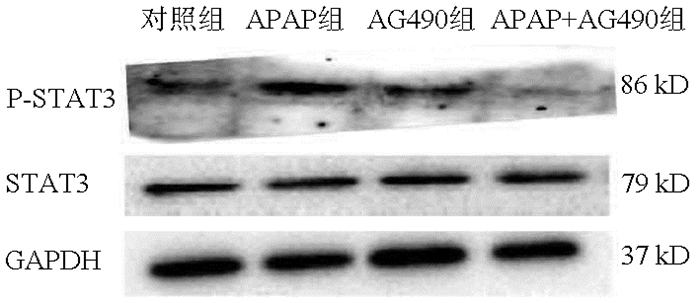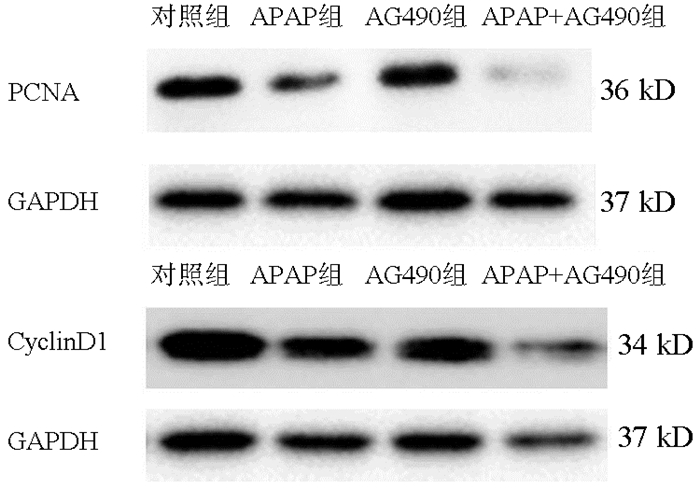| [1] |
KIM M, YUN JW, SHIN K, et al. Expression levels of GABA-A receptor subunit alpha 3, gabra3 and lipoprotein lipase, lpl are associated with the susceptibility to acetaminophen-induced hepatotoxicity[J]. Biomol Ther (Seoul), 2017, 25(2): 112-121. DOI: 10.4062/biomolther.2016.076 |
| [2] |
|
| [3] |
YAN M, HUO Y, YIN S, et al. Mechanisms of acetaminophen-induced liver injury and its implications for therapeutic interventions[J]. Redox Biol, 2018, 17: 274-283. DOI: 10.1016/j.redox.2018.04.019 |
| [4] |
XIE Y, MCGILL MR, DU K, et al. Mitochondrial protein adducts formation and mitochondrial dysfunction during N-acetyl-m-aminophenol (AMAP)-induced hepatotoxicity in primary human hepatocytes[J]. Toxicol Appl Pharmacol, 2015, 289(2): 213-222. DOI: 10.1016/j.taap.2015.09.022 |
| [5] |
LIU FC, LEE HC, LIAO CC, et al. Tropisetron protects against acetaminophen-induced liver injury via suppressing hepatic oxidative stress and modulating the activation of JNK/ERK MAPK pathways[J]. Biomed Res Int, 2016, 2016: 1952947. http://pubmedcentralcanada.ca/pmcc/articles/PMC5116490/ |
| [6] |
ABDULKHALEQ FM, ALHUSSAINY TM, BADR MM, et al. Antioxidative stress effects of vitamins C, E, and B12, and their combination can protect the liver against acetaminophen-induced hepatotoxicity in rats[J]. Drug Des Devel Ther, 2018, 12: 3525-3533. DOI: 10.2147/DDDT.S172487 |
| [7] |
YU PF, WU Q, DUAN ZP, et al. Research progress in the mechanism of drug-induced liver injury due to paracetamol[J]. J Clin Hepatol, 2019, 35(9): 2108-2112. (in Chinese) DOI: 10.3969/j.issn.1001-5256.2019.09.050 |
| [8] |
BREU AC, PATWARDHAN VR, NAYOR J, et al. A multicenter study into causes of severe acute liver injury[J]. Clin Gastroenterol Hepatol, 2019, 17(6): 1201-1203. DOI: 10.1016/j.cgh.2018.08.016 |
| [9] |
MOH A, IWAMOTO Y, CHAI GX, et al. Role of STAT3 in liver regeneration: Survival, DNA synthesis, inflammatory reaction and liver mass recovery[J]. Lab Invest, 2007, 87(10): 1018-1028. DOI: 10.1038/labinvest.3700630 |
| [10] |
ABE M, YOSHIDA T, AKIBA J, et al. STAT3 deficiency prevents hepatocarcinogenesis and promotes biliary proliferation in thioacetamide-induced liver injury[J]. World J Gastroenterol, 2017, 23(37): 6833-6844. DOI: 10.3748/wjg.v23.i37.6833 |
| [11] |
JUNG J, MOON JW, CHOI JH, et al. Epigenetic alterations of IL-6/STAT3 signaling by placental stem cells promote hepatic regeneration in a rat model with CCl 4-induced Liver Injury[J]. Int J Stem Cells, 2015, 8(1): 79-89. DOI: 10.15283/ijsc.2015.8.1.79 |
| [12] |
RÍO A, GASSULL MA, ALDEGUER X, et al. Reduced liver injury in the interleukin-6 knockout mice by chronic carbon tetrachloride administration[J]. Eur J Clin Invest, 2008, 38(5): 306-316. DOI: 10.1111/j.1365-2362.2008.01939.x |
| [13] |
HU Z, HAN Y, LIU Y, et al. CREBZF as a key regulator of STAT3 pathway in the control of liver regeneration in mice[J]. Hepatology, 2020, 71(4): 1421-1436. DOI: 10.1002/hep.30919 |
| [14] |
SIVEEN KS, SIKKA S, SURANA R, et al. Targeting the STAT3 signaling pathway in cancer: Role of synthetic and natural inhibitors[J]. Biochim Biophys Acta, 2014, 1845(2): 136-154. http://europepmc.org/abstract/med/24388873 |
| [15] |
BHUSHAN B, APTE U. Liver regeneration after acetaminophen hepatotoxicity: Mechanisms and therapeutic opportunities[J]. Am J Pathol, 2019, 189(4): 719-729. DOI: 10.1016/j.ajpath.2018.12.006 |
| [16] |
DENG Y, SHI WH, TONG JD, et al. Effects of epigailocatechin-3-gallate on the proliferation and migration of vascular smooth muscle cells induced by platelet-derived growth factor BB in rats[J]. J Fudan Univ(Med Sci), 2018, 45(4): 503-508. (in Chinese) DOI: 10.3969/j.issn.1672-8467.2018.04.011 |
| [17] |
|
| [18] |
KOWALSKA E, BARTNICKI F, FUJISAWA R, et al. Inhibition of DNA replication by an anti-PCNA aptamer/PCNA complex[J]. Nucleic Acids Res, 2018, 46(1): 25-41. DOI: 10.1093/nar/gkx1184 |
| [19] |
PATEL H, ABDULJABBAR R, LAI CF, et al. Expression of CDK7, Cyclin H, and MAT1 Is elevated in breast cancer and is prognostic in estrogen receptor-positive breast cancer[J]. Clin Cancer Res, 2016, 22(23): 5929-5938. DOI: 10.1158/1078-0432.CCR-15-1104 |








 DownLoad:
DownLoad:
